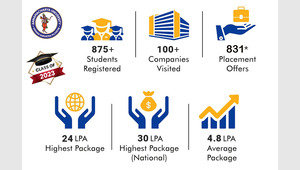Department
Artificial Intelligence & Machine Learning
Research Areas
Best Research and Thesis in Artificial Intelligence and Machine Learning
- Machine Learning
Machine Learning involves the use of Artificial Intelligence to enable machines to learn a task from experience without programming them specifically about that task. (In short, Machines learn automatically without human hand holding!!!) This process starts with feeding them good quality data and then training the machines by building various machine learning models using the data and different algorithms. The choice of algorithms depends on what type of data do we have and what kind of task we are trying to automate. - Deep Learning
Deep Learning is a subset of Machine Learning that learns by imitating the inner working of the human brain in order to process data and implement decisions based on that data. Basically, Deep Learning uses artificial neural networks to implement machine learning. These neural networks are connected in a web-like structure like the networks in the human brain (Basically a simplified version of our brain!). - Reinforcement Learning
Reinforcement Learning is a part of Artificial Intelligence in which the machine learns something in a way that is similar to how humans learn. As an example, assume that the machine is a student. Here the hypothetical student learns from its own mistakes over time (like we had to!!). So the Reinforcement Machine Learning Algorithms learn optimal actions through trial and error.
This means that the algorithm decides the next action by learning behaviors that are based on its current state and that will maximize the reward in the future. And like humans, this works for machines as well! For example, Google’s AlphaGo computer program was able to beat the world champion in the game of Go (that’s a human!) in 2017 using Reinforcement Learning. - Robotics
Robotics is a field that deals with creating humanoid machines that can behave like humans and perform some actions like human beings. Now, robots can act like humans in certain situations but can they think like humans as well? This is where artificial intelligence comes in! AI allows robots to act intelligently in certain situations. These robots may be able to solve problems in a limited sphere or even learn in controlled environments. - Natural Language Processing (NLP)
It’s obvious that humans can converse with each other using speech but now machines can too! This is known as Natural Language Processing where machines analyze and understand language and speech as it is spoken (Now if you talk to a machine it may just talk back!). There are many subparts of NLP that deal with language such as speech recognition, natural language generation, natural language translation, etc. - Computer Vision
The internet is full of images! This is the selfie age, where taking an image and sharing it has never been easier. In fact, millions of images are uploaded and viewed every day on the internet. To make the most use of this huge amount of images online, it’s important that computers can see and understand images. And while humans can do this easily without a thought, it’s not so easy for computers! This is where Computer Vision comes in. - Recommender Systems
When you are using Netflix, do you get a recommendation of movies and series based on your past choices or genres you like? This is done by Recommender Systems that provide you some guidance on what to choose next among the vast choices available online. A Recommender System can be based on Content-based Recommendation or even Collaborative Filtering. - Internet of Things
Artificial Intelligence deals with the creation of systems that can learn to emulate human tasks using their prior experience and without any manual intervention. Internet of Things , on the other hand, is a network of various devices that are connected over the internet and they can collect and exchange data with each other.





